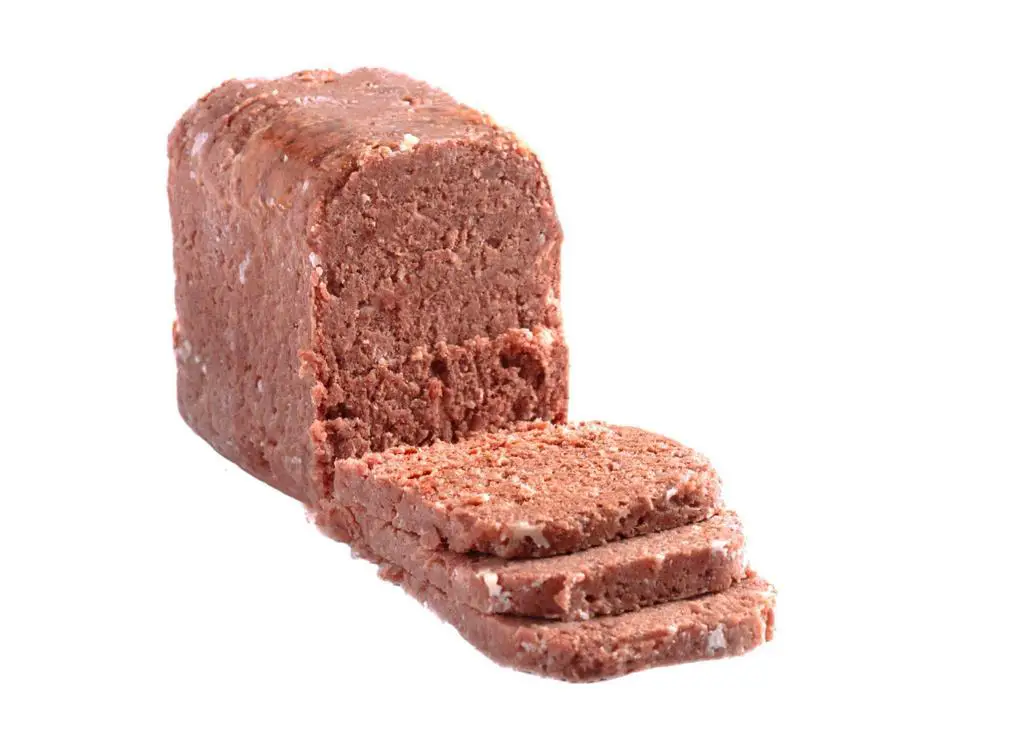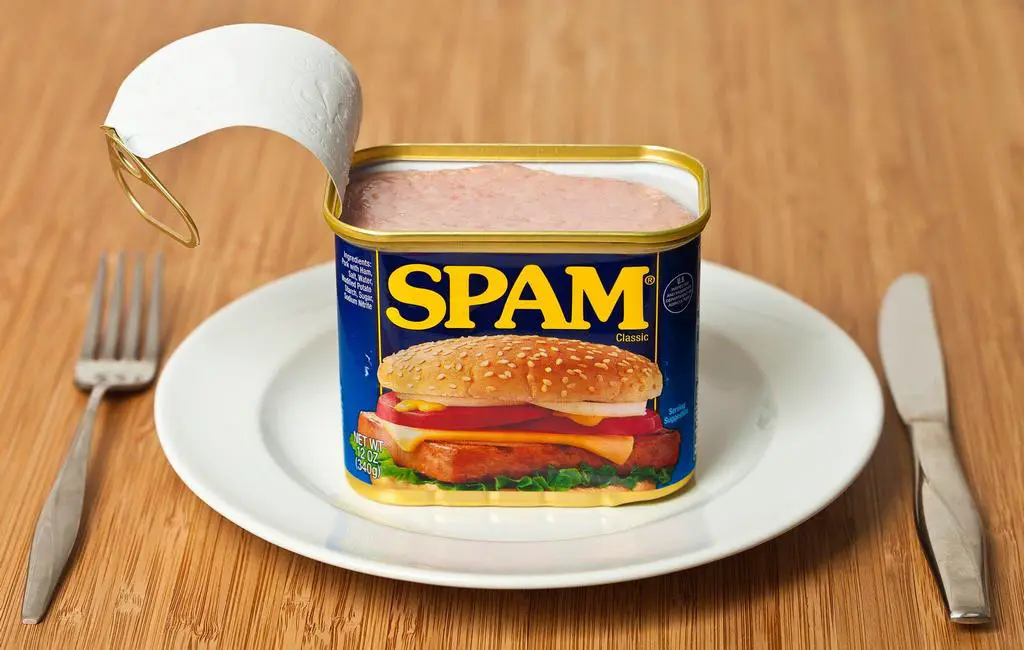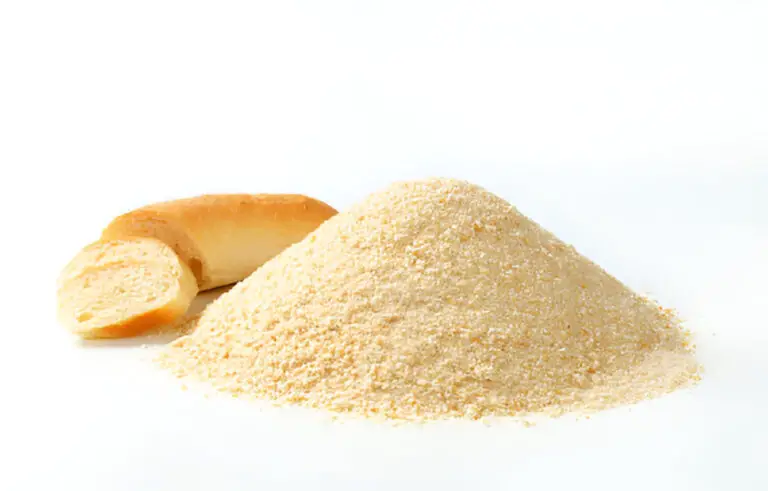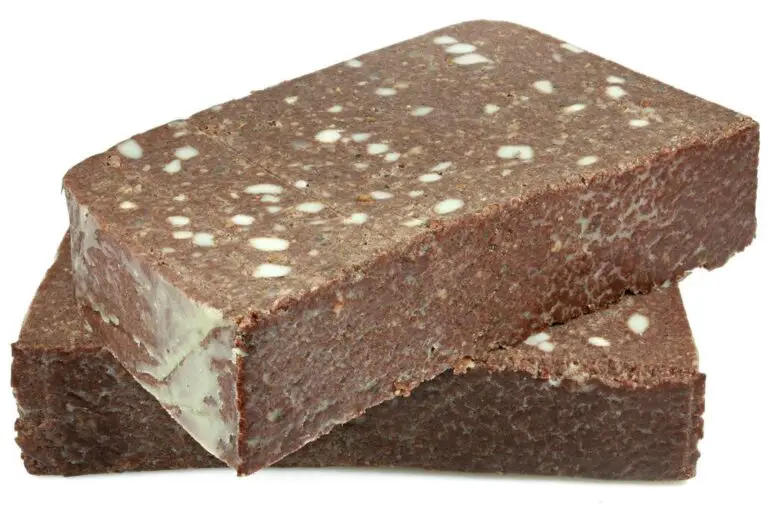Does Spam Contain Beef? Spam Ingredients Exposed

In the realm of canned meats, one product has held its ground as a staple in kitchens worldwide – Spam. Its very name is synonymous with a unique taste, simplicity, and a touch of nostalgia.
But have you ever wondered what exactly makes up this iconic meat in a can? The mystery surrounding the ingredients of Spam, particularly the presence of beef, has intrigued many curious minds. What gives Spam its distinct flavor, and does it include beef in its blend of ingredients?
In this article, we will embark on a flavorful exploration, dissecting the components of Spam, dispelling myths, and offering insight into its nutritional profile. Get ready to have the curtain lifted on the question of whether or not beef is hidden within the confines of a Spam can.
The History of Spam
Hormel Foods Corporation first introduced Spam, a canned meat product that has become a staple in many kitchens all over the world, in 1937. It was created as an affordable and convenient source of protein during the Great Depression. The name Spam is actually a contraction of spiced ham, accurately reflecting its primary ingredients.
What made Spam unique was its long shelf life, requiring no refrigeration and making it ideal for wartime rations. In actuality, allied forces throughout the world consumed over 100 million pounds of Spam during World War II. Its popularity continued to rise after the war as people grew accustomed to its distinctive taste and versatile nature.
Despite initially being met with resistance due to skepticism towards canned meat products, Spam gradually solidified its place on grocery store shelves. Over time, various recipes involving Spam emerged – from Spam musubi in Hawaii to budae jjigae (army stew) in South Korea. This global reach further highlights how this humble processed meat triumphed over initial doubts and cemented itself as a cultural icon.
To this day, some may view Spam as nothing more than cheap mystery meat, while others hold it dear for nostalgic reasons or culinary creativity. Regardless of one’s perspective on this iconic canned delicacy, there’s no denying that it holds a significant place in history as a testament to humans’ ingenuity during difficult times.
Unveiling the Mysteries Behind Spam Ingredients

Contrary to popular belief, Spam does not contain beef. In fact, its main ingredient is pork shoulder meat. This fatty cut of pork gives Spam its distinct taste and texture. Alongside the pork, other ingredients include salt, water, sugar, potato starch, and sodium nitrite – a preservative that helps prolong the shelf life of the product.
While some may turn up their noses at the mere mention of spam due to its processed nature, it’s worth noting that one serving contains fourteen grams of protein. That’s more than what you would find in a typical hot dog! So while it may not be everyone’s idea of a gourmet meal, Spam can actually provide some nutritional value, making it a staple in many households worldwide.
So, what exactly goes into that can of Spam? Let’s have a look:
Table 1: Spam Ingredients
| Ingredient | Purpose |
| Pork Shoulder Meat | Provides the main meat content of Spam. |
| Ham | Adds a distinct flavor and texture. |
| Salt | Acts as a preservative and enhances taste. |
| Water | It helps in processing and achieving texture. |
| Modified Potato Starch | Thickens the mixture. |
| Sugar | Balances the flavors. |
| Sodium Nitrite | Preserves the meat and gives it color. |
| Sodium Tripolyphosphate | Maintains moisture. |
| Flavorings | Enhance the overall taste of Spam. |
Does Spam Actually Contain Beef?
The debate surrounding the true contents of Spam has been ongoing for years. Some argue that this iconic canned meat is made solely from pork, while others believe that beef is also a key ingredient.
Spam does not contain beef. It is made of pork shoulder and ham, salt, water, potato starch, sugar, and sodium nitrite. The meat is ground and mixed with the other ingredients before being transferred to cans, vacuum-sealed, and cooked inside the cans. After cooling, the cans are ready for sale.
For some spam-brand products, the truth lies somewhere in between. While it is true that Spam primarily consists of pork, it does contain a small amount of beef as well.
Spam’s complex flavor profile can be attributed to the combination of these two meats. The inclusion of beef adds a subtle richness and depth to the overall taste, complementing the savory qualities of the pork. However, it is important to note that beef is not a dominant component and plays more of a supporting role.
Ultimately, whether or not Spam contains beef may not make much difference to its die-hard fans who enjoy its unique flavor and versatility in various dishes. However, understanding the composition of this beloved canned meat provides some insight into why it has remained popular for decades.
So next time you take a bite out of a slice of Spam, savoring its combination of flavors, know that both myth and reality play a part in its creation
The Making of Spam: Production Process
The making of Spam involves a meticulous production process that combines pork shoulder meat, ham, salt, water, sugar, and a hint of sodium nitrite for preservation. Initially, the pork and ham are ground together, forming the base of the product. This mixture is then blended with a precise combination of salt, water, and sugar, contributing to Spam’s distinctive taste profile.
The addition of sodium nitrite aids in preserving the meat and preventing bacterial growth, ensuring an extended shelf life for the final product. This amalgamation of ingredients undergoes thorough mixing and is subsequently molded into the familiar rectangular shape of the Spam block.
Emphasizing the significance of quality control measures in Spam production, it’s imperative to ensure that each batch adheres to strict standards. Quality control involves rigorous checks at various stages, including raw material sourcing, processing, and packaging. Throughout the process, parameters such as temperature, moisture levels, and ingredient proportions are closely monitored to maintain consistency and guarantee product safety.
Regular inspections and tests for contaminants or any deviations from the established recipe are conducted to uphold the brand’s reputation and assure consumers of the product’s reliability.
Is Spam a Healthy Choice?
Now that we’ve clarified what’s inside a can of Spam, let’s touch on its nutritional aspects. Spam is considered a processed meat product, and like many processed foods, it should be consumed in moderation. Here’s a brief overview of its nutritional content per 100 grams:
- Calories: Approximately 232 kcal
- Protein: 12 grams
- Fat: 19 grams
- Sodium: 1,345 milligrams
- Carbohydrates: 2 grams
- Sugar: Less than 1 gram
While Spam is a good source of protein, it’s relatively high in fat and sodium, which may not align with a healthy diet if consumed excessively. It’s best enjoyed as an occasional treat rather than a daily staple.
Related: MSG in Spam: Why Does It Taste So Salty?
Popular Spam Dishes
Despite its nutritional content, Spam has earned its place in various cuisines worldwide. Its versatility in the kitchen allows for creative culinary endeavors. Here are some popular dishes that feature Spam:
1. Spam Musubi
This Hawaiian favorite consists of a slice of Spam, rice, and a strip of nori (seaweed), often held together with a drizzle of soy sauce or teriyaki glaze.
2. Spam and Eggs
A classic breakfast option, Spam and eggs are served together in various ways – fried, scrambled, or in an omelet.
3. Spam Fritters
Chunks of Spam are coated in a seasoned batter and fried to golden perfection. A crispy and flavorful snack.
4. Spam Tocino
In the Philippines, Spam is sometimes prepared in a sweet and savory marinade, similar to the local tocino.
In Conclusion
In conclusion, the truth about Spam ingredients is far more nuanced than many may have realized. While it is true that Spam contains pork shoulder meat, it’s also important to note that beef derivatives can indeed be found in certain variants of this iconic canned meat.
This revelation sheds new light on the ever-present question surrounding Spam and its composition. It challenges the simplistic notion that Spam is solely a pork product and highlights the complex interplay of ingredients that contribute to its distinctive taste. The inclusion of beef derivatives not only adds a layer of flavor but also hints at the culinary versatility of this quirky yet beloved food item.
Ultimately, understanding the truth about Spam ingredients invites us to reconsider our preconceived notions and invites further exploration into the world of processed meats.
While opinions on consumption differ widely, one thing remains clear – there’s more to this tin-can delight than meets the eye. So whether you’re a die-hard fan or an intrigued skeptic, delve deeper into the curious history and diverse flavors offered by Spam – you might just uncover a surprising gem in each bite.
FAQs on Spam and It’s Beef Ingredients
Is Spam made of pork or beef?
Spam is primarily made of pork shoulder meat. It also includes ham, salt, water, sugar, and sodium nitrite for preservation.
What are the main ingredients in Spam?
The main ingredients in Spam include pork with ham, salt, water, potato starch, sugar, and sodium nitrite for preservation.
Is Spam bad for your health?
Consuming Spam in moderation is generally considered safe. However, its high sodium and fat content may pose health risks if consumed excessively or as a regular dietary staple.
How long does Spam last?
Canned Spam has a long shelf life, typically lasting 2-5 years if stored in a cool, dry place. Once opened, it should be consumed within a few days if refrigerated.
Can you eat Spam raw?
No, it is not recommended to eat Spam raw. It should be fully cooked before consumption to avoid any risk of foodborne illness.
Are there any healthier alternatives to Spam?
Yes, some healthier alternatives to Spam include lean cuts of fresh pork, turkey, chicken, or plant-based protein options like tofu or tempeh.
Can Spam be part of a balanced diet?
In moderation, Spam can be part of a balanced diet. However, it’s essential to consume it sparingly and balance it with a variety of nutritious foods.
Does Spam contain any preservatives?
Yes, Spam contains sodium nitrite, a preservative commonly used in processed meats to prevent bacterial growth and preserve its shelf life.
Is there a vegetarian version of Spam available?
Yes, several vegetarian and plant-based alternatives to Spam are available, made from ingredients like tofu, tempeh, or seitan, providing a similar texture and flavor for those following a vegetarian or vegan diet.






